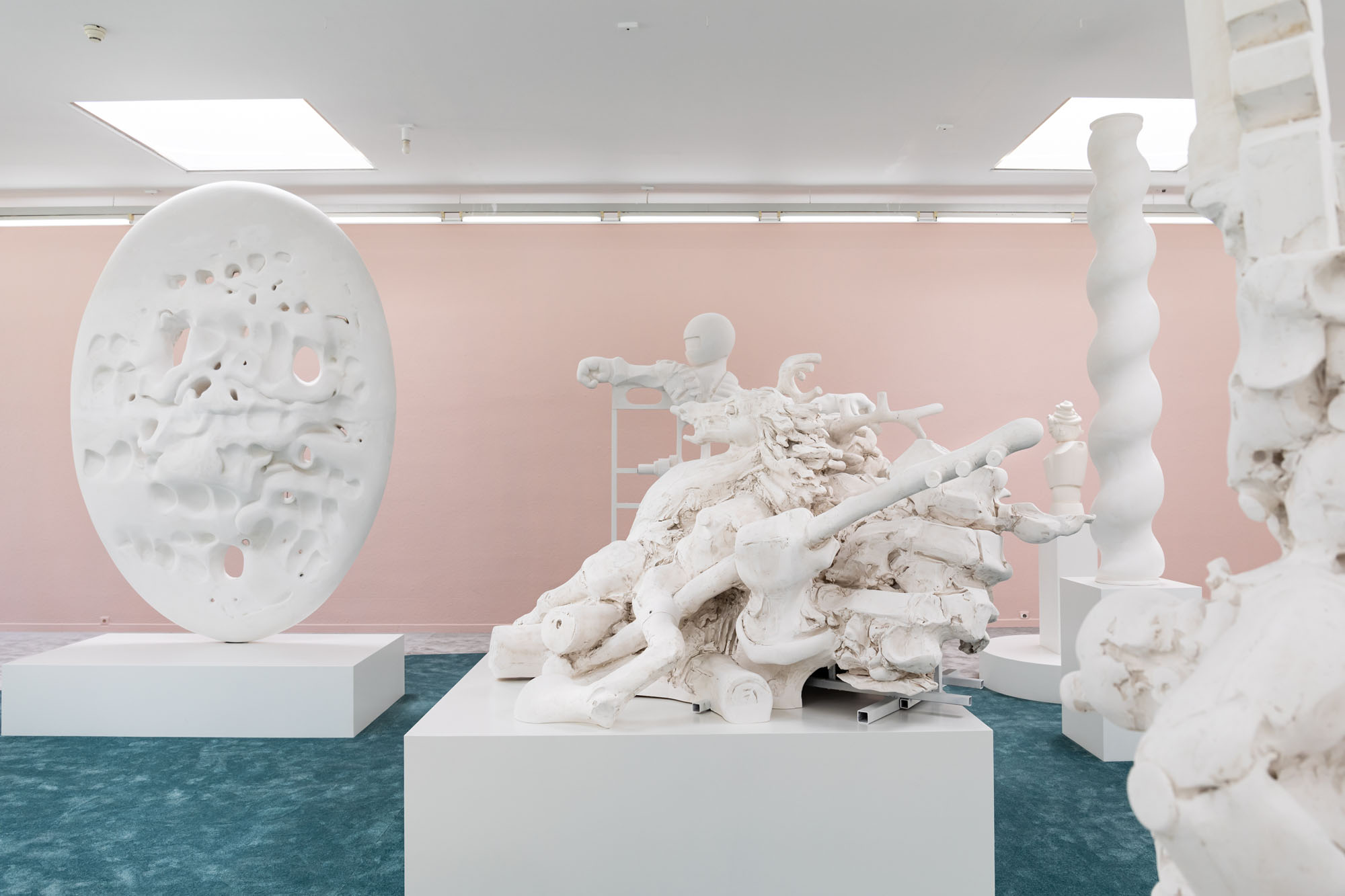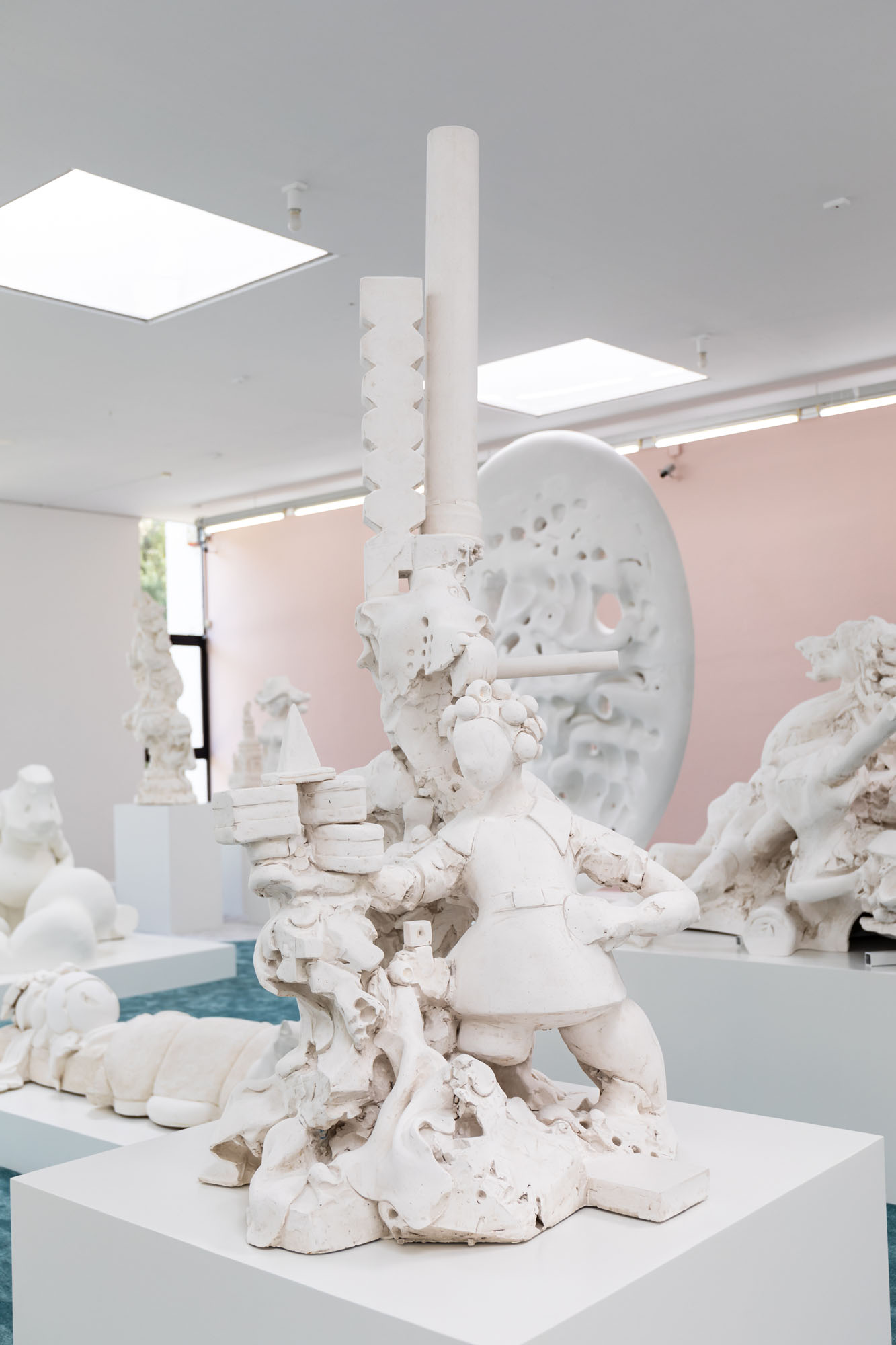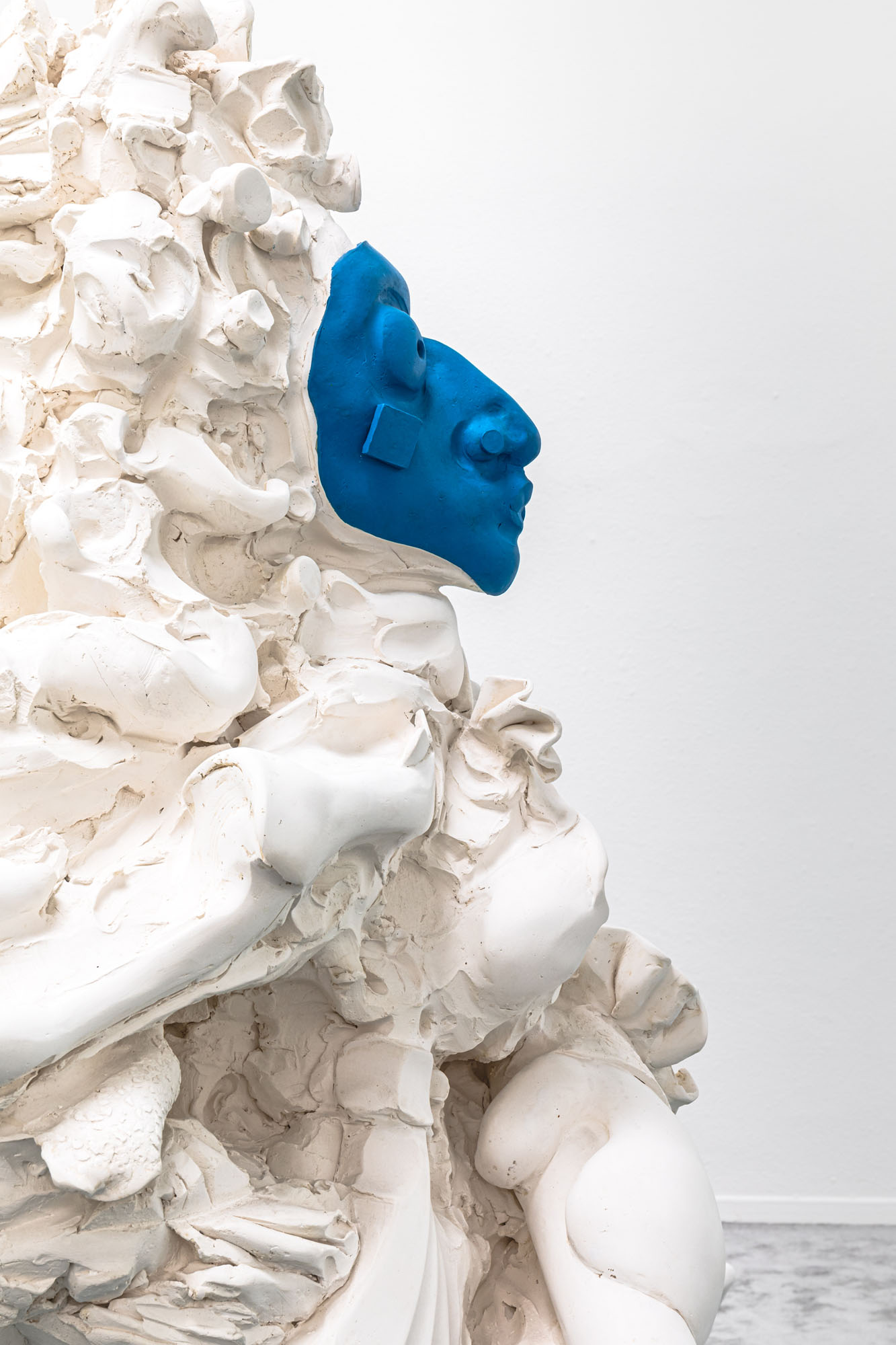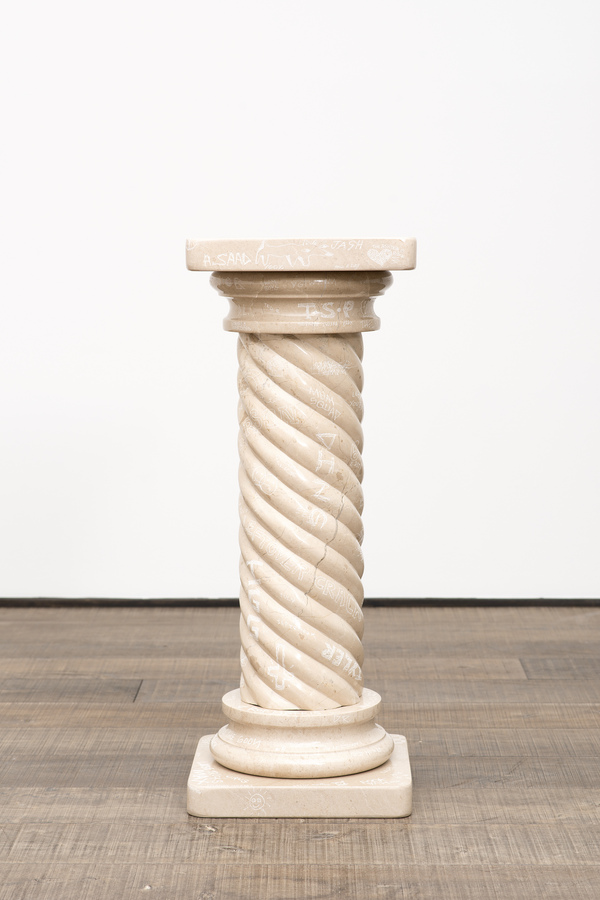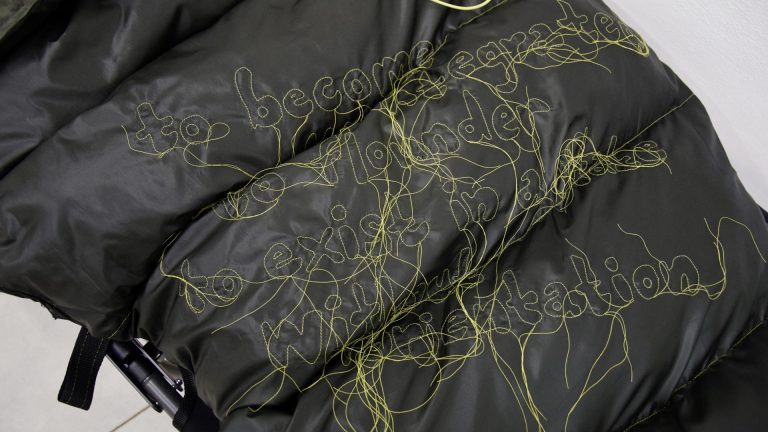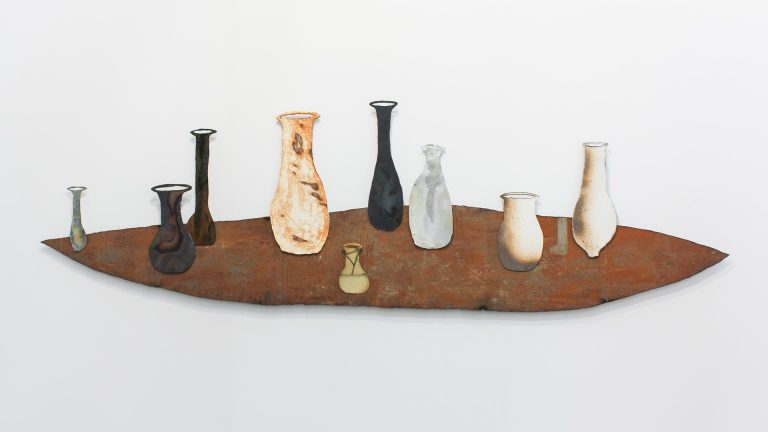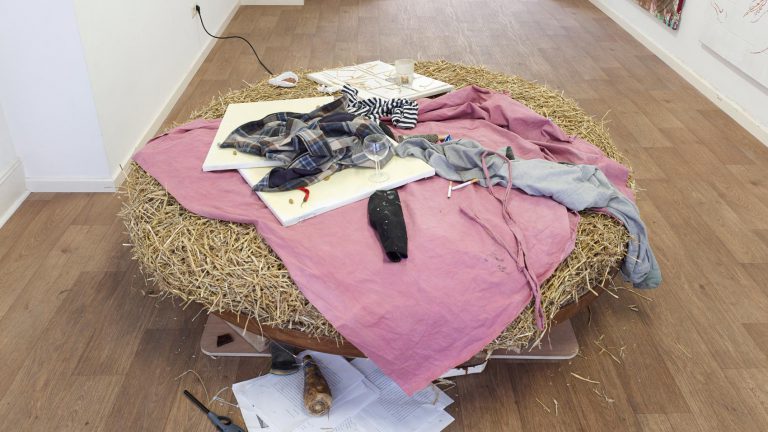Artist: Nadia Naveau
Exhibition title: Let’s Play It By Ear
Venue: Museum Dhondt-Dhaenens, Deurle, Belgium
Date: October 13, 2019 – January 12, 2020
Photography: Rik Vannevel / images copyright and courtesy of the artist, Museum Dhondt-Dhaenens and Base-Alpha, Antwerp
The Belgian artist Nadia Naveau (1975, Bruges, lives and works in Antwerp and Saint-Bonnet-Tronçais) is best known for her figurative sculptures. The typically seductive, surprising sculptures are the result of a balanced play with colors, shapes, scales and various materials such as plaster, ceramics, bronze, plasticine and polyester. Naveau’s sculptures reveal a certain postmodern twist because of their eclecticism. For example, a single image can evoke references to The Simpsons, music as well as to classical antiquity, baroque or Mexican culture. The exhibition at the museum Dhondt-Dhaenens displays a newly created evocative body of work based on novel sculptures combined with existing works in plaster.
Naveau, literally and figuratively, started working on the idea of a retrospective. Instead of assembling existing works, Naveau decided to reproduce sculptures in white plaster spanning a period of the last twenty years. The otherwise colorful sculptures such as I Wanna be a Cow Girl (2002) were “stripped” and reduced to their formal essence. The exhibition a so contains works intended for public spaces such as Shirley’s Temple (2006) from the Park ter Beuken in Lokeren. Where the mold was no longer completely available, new sculptural elements were added freely. Some sculptures thus acquired a monumental allure placed on a new socle. Other sculptures, such as Pori (2018), obtain a different meaning following a change in scale. This white baroque-like groupage contrasts strongly with the stately central space where a number of original sculptures are staged in a peculiar green niche-shaped structure.
This process of “recycling” and attention to presentation is typical of the practice of Naveau, who likes to explore the boundaries of sculpture and continually questions the autonomy and status of a sculpture. At the basis of this project is one of the key works from Naveau’s oeuvre, Le Salon Du Plaisir, from 2007. In this work, Naveau experimented for the first time with “jumbling” new and old sculptures into a new work. Naveau got her inspiration from the nineteenth-century Parisian salons. At that time, many sculptures were shown in plaster, after which the buyers ordered the final work made to measure and in the material of their choice. As a relatively inexpensive and light material, plaster was an alternative to the labour-intensive and time-consuming process of creating sculptures in luxurious materials such as marble and bronze.
Equally special is the associative character typical for her sculptures. All her sculptures, no matter how large or how small, are hand-sculpted from large, rough blocks of clay. The clay sculpture is molded to be casted into the final material. The initial, tactile act of sculpting is often intuitive. Usually a coincidental shape in the clay initiates a certain association that leads to new forms and ultimately gives birth to the final sculpture. Naveau sees coincidences or failures as potential. Naveau: “It happens in the clay. The clay imposes its own conditions. At some point, there is no longer a dispute with the “thing” in progress. It shows itself in a short moment of sudden understanding. The exhibition Let’s Play It By Ear is named after this light-hearted statement.”
The sculptures contain multiple references that introduce substantive and formal stratification. As such, they are often described as three-dimensional collages. The references inspiring Naveau are difficult to define. She is fascinated by the images that surround her – no matter how banal, important or art-historical the reference may be. Popular children’s heroes such as Goofy have the same weight in Naveau’s universe as Mexican masks and images of classical or modern masters such as Bernini and Brancuși. The visually engaging sculptures require time to be viewed, under- stood and, above all, absorbed; they are an antithesis to the fast, digital image consumption of the 21st century.
Recognizable and familiar images are distorted, stylized and shaped intuitively. Each of the sculptures bears witness to a search for renewal, but also to the pleasure and the boundless freedom of sculpting. Naveau’s work has many layers. The images are narrative but never completely readable. They are exuberant, yet can be subdued and still. They are baroque but also classical and often as much stylized as freely sculpted. Her work is about beauty but also about ugliness and good taste. A sculpture by Naveau is possibly most of all obstinate and contradictory and, as Naveau explains, “it is a mixture that works without being able to instantly interpret what it is all about.”
Text by Charlotte Crevits, 2019






